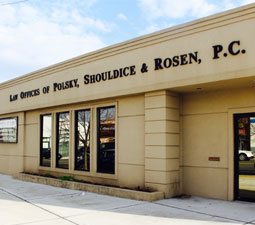Employees Aren't The Only Ones Hurt By A Workplace Injury
When an employee is injured at work, sometimes a company is left hurting too. Unexpected days off, fewer employees doing the same amount of work, stalled operations.
There's a financial cost too. In 2013, more than 3 million workers experienced workplace injuries or illnesses. All of these combined cost the economy more than $198 billion.
Not All Accidents Can Be Prevented
Caution and training go a long way when it comes to keeping a team safe. However, there are countless injuries that can happen in the workplace no matter how much you try to prepare.
Below is a list of the 10 most common types of workplace injuries and some suggestions on how they can be prevented. Take a look at the list. You may have been involved in one of these types of accidents in the past and not realised you were entitled to Workers' Compensation.
10 of the Most Common Workplace Injuries
10. Violent Acts.
When office disagreements get out of control sometimes a fight can result, leaving employees hurt.
Help prevent by: Offering anti-violence training and creating an environment where employees feel free to talk with company management about potential risks. Never condoning violence or roughhousing.
9. Highway Accidents.
When employees drive as part of their job duties, accidents can happen on the road.
Help prevent by: Teaching employees about safe driving practices and discouraging workers from driving too much in any given day. Ensure company vehicles are safe and in good working order.
8. Machinery Injuries.
Occurs most often in companies where heavy machinery is used. Causes include, but are not limited to, loose clothing and jewelry, unbound hair, defective equipment.
Help prevent by: Providing safety guards to keep employees out of harm's way around heavy machines. Having employees wear proper work attire, and training employees on all necessary safety measures for machine use.
7. Repetitive Stress Injuries
Although more subtle than most other types of injuries, repetitive stress injuries, such as injuries that result from constantly typing or staring at a computer screen, can seriously damage back muscles, tendons, the neck and eyes. These injuries can lead to problems such as poor vision and carpal tunnel syndrome.
Help prevent by: Teaching employees to take regular breaks to rest their eyes and muscles. Make sure desks, furniture and equipment are user-friendly, practical and comfortable. If possible, have employees rotate job duties so their muscles get a break.
6. Reaction Injuries
When an employee slips or trips but doesn't actually fall, they can still seriously injure their muscles and have physical trauma. A fall is not the only way an employee can get hurt.
Help prevent by: Keeping workplaces as clutter-free as possible. Clearly label wet or slippery surfaces, whether on rainy days or if their has been a spillage. Using non-slip rugs in hazardous areas and near entrances and exits where the floor is more likely to get wet is also a good solution.
5. Falls From Heights
Whether caused by defective equipment or otherwise, falls are a big cause of employee injuries. Workers on or near ladders, stairways, roofs and other elevated surfaces should take extra caution.
Help prevent by: Focusing on employee training and vigilance, but also by ensuring that proper protection devices (such as guardrails or safety harnesses) are used as needed.
4. Struck Against Injuries
In this case, instead of an item falling against an employee, an employee collides with an object. For example: workers colliding with machinery, doors, tables, furniture or other stationary objects.
Help prevent by: Clearly labeling hazards in the workplace, especially those that could be easily missed. Keeping workspaces clean, and training employees on how to navigate their work areas safely and efficiently.
3. Falling Object Injuries
Head injuries are the most common type of incidents that result from falling objects, both objects dropped by employees and objects that fall from high surfaces.
Help prevent by: Adding signs to clearly mark areas where debris and objects may fall. Carefully stowing and stacking items away from the work area, and not stacking objects any higher than height that is safe.
2. Slips and Falls
Accidents caused by wet floors, uneven and unsteady surfaces, and objects in the way of workers are responsible for a vast amount of muscle injuries, sprains, fractures and more.
Help prevent by: Placing warning signs near potentially slippery areas or uneven floor surfaces. Adding non-slip rugs to slick spots, especially entrances and exits, and keeping cords and other obstacles covered or clearly flagged. Teaching workers the importance of cleaning up spills, trash and supplies right away.
1. Overexertion
Injuries related to pulling, pushing, lifting, carrying or throwing motions. Overexertion leads to about $13.6 billion in insurance benefits a year.
Help prevent by: Training employees to safely use equipment, to practice safe movements (i.e., lift from the legs, not the back) and to take enough breaks so that they don't over work their muscles.
How Safety Officers Can Help
Many companies hire specific safety officers to encourage safety on the job. The responsibilities of safety officers vary from company to company, but these are some of the common duties:
- Making and implementing safety policies
- Conducting workplace safety inspections
- Organizing workplace accident investigations
- Providing safety training and coaching
- Ensuring regulatory compliance, such as with the government's Occupational Safety & Health Administration.
The first thing you should do after you've been injured at work is report your injury to the management and get the ball rolling for an investigation. Remember that an investigation is not about pointing the finger or finding someone to blame. It's about getting to the root of the problem and making the workplace safe for everyone. Safety officers should be able to offer some guidance if you've been injured.
Disclaimer: For informational purposes only. This is not a substitute for legal advice. If you need legal advice please contact us.


